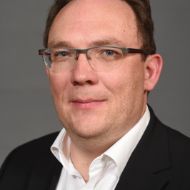- About Aginode
- Data Networks
- Telecom Infrastructure
- Products
-
Resources
- Resources
- Documentation
- Blog
-
Case Studies
- Overview
- Innoasis development in Norway
- Eemsdelta Campus
- Hotelschool The Hague
- Emergency covid hospital, Hong Kong
- Société du Grand Paris
- Centrin Datacentres
- Airbus
- Athens Historic City Hall
- Pinewood Studios
- Goethe University Frankfurt
- Denmark New University Hospital
- University of Toulouse
- CHM Maubeuge: a model for future-ready hospitals
- Webinars
- Software Tools
- Warranty
- Newsroom
- Search
- Contact us
- Compare
- Sign in
Office & Enterprise
Keep up with network demands while meeting your sustainability goals


Nexans LANactive sustainable IT network solutions
Get the most out of your LAN without overspending
A challenging balance
As the number of devices, users, applications and networks continues to grow, so does the global carbon footprint. According to IDC some 212 billion IoT-enabled devices could be connected to the internet soon. Cisco predicts that by 2021, there will be 4.6bn Internet users worldwide and 271 billion connected devices. Today, companies face the challenge of meeting increasingly strict sustainability goals, while also being required to install and power a fast-growing number of devices, from IoT (Internet of Things) sensors to Wireless Access Points. The uptake of this equipment is being driven by developments such as 5G, Cloud, and Wi-Fi 6
Which actions can you take to ensure you keep up with the network requirements of today and tomorrow while also doing your part to reduce CO2 emissions?
Using ICT to improve energy infrastructure
The Information and Communication Technology (ICT) sector generates up to two per cent of all global CO2 emissions*. However, ICT also holds the key to improving its own performance. Besides improving its own energy efficiency, ICT can also help other sectors become more efficient, using the technologies it empowers to make building, logistics, workplaces and much more smart.
A study carried out by the Global Enabling Sustainability Initiative (Gesso) and Deloitte shows ICT can help solve a wide variety of sustainability challenges and climate change in particular. Big data, AI and intelligence built into devices and systems that consume power are essential to this. One way of reducing energy usage is by introducing ‘intelligent’ network components and systems. Network switches can optimize efficiency by scheduling port and wireless access, for example, and constantly adjust power usage or shutting down automatically when not in use.
The latest release of the PoE standard has found its way to numerous products, from lighting, sensors, and smart thermostats helping PoE to drive digitization in smart buildings. Building managers and owners can address the needs of building inhabitants while reducing energy consumption and supporting sustainability goals.
"Fibre To The Office" (FTTO) and power saving
Fibre To The Office (FTTO) can significantly reduce energy consumption and CO2 emissions during the use phase. FTTO solutions use fewer active and passive components than traditional network designs. The benefits of copper and fibre are combined for maximum performance with reduced energy consumption. FTTO Switches consume very little power - 4-5 Watts per switch and typically ~0.7W per port **. This is nearly half of the total power consumption of floor distribution switches in traditional networks.
FTTO network designs can reduce power consumption by as much as 70 per cent. Less energy usage means lower CO2 emissions and, therefore, increased sustainability. FTTO infrastructures may support several generations of active equipment. Both capital and operational expenditure can be entirely optimised based on new project requirements or network designs, while fibre optic networks easily accommodate increasingly higher data rates.
New sources of energy
ICT remains one of the world’s fastest growing sectors, with a marked impact on other technology areas, helping them become greener and sustainable. Besides continuous self-improvement, the ICT sector also stands to gain a great deal from, using more renewable energy. According to figures shared by Ericsson, the ICT sector’s carbon footprint could be reduced by more than 80 percent if all electricity consumed came from renewable sources.
Nexans LANactive introduces solutions that help optimise the power of your network based on your specific requirements and sustainability goals. Feel free to get in touch and discuss your needs!
* Trends in Data Centre Energy Consumption under the European Code of Conduct for Data Centre Energy Efficiency, European Commission, Joint Research Centre (JRC), Directorate C-Energy, Transport and Climate
** with Nexans Eco Mode activated
Categories
Our websites
Select your country to find our products and solutions
-
Africa
- Africa
- Ghana
- Ivory Coast
- Morocco
- North West Africa
- Americas
- Asia
- Europe
- Oceania
